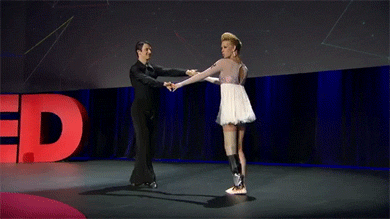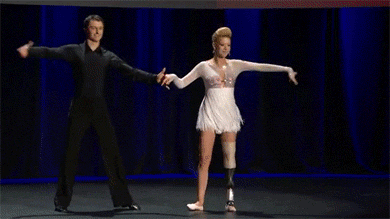2018-10-07










2018-10-07
More Posts from Possiblyfromorion and Others

A demonstration of the physics of inertia. (Source)






#chris evans #in where he is actually steve rogers

Installed in the year 1410, this 600 year old clock in the city of Prague is the World’s oldest astronomical clock still in operation.
“Once you’ve had a glimpse of reality, there’s nothing you can do to stop the ego from dissolving in time.”
— Adyashanti (via sacredfemininegypsyheart)












Hugh Herr: The new bionics that let us run, climb and dance

The Difference between ENTPs and INTPs
Let’s be honest, a lot of people confuse ENTPs and INTPs. Is it possible to figure out why that is? Well, probably only an xNTP can figure it out.
It’s easy to confuse an ENTP for an INTP because they share the same cognitive functions. INTPs are Ti-Ne-Si-Fe, while ENTPs are Ne-Ti-Fe-Si. An individual who’s good at juggling those functions can easily come off as something they’re not. This applies to all introvert versus extrovert dichotomies.
But here’s the thing. When you switch I for E, the top function changes from a judging function to a perceiving function or vice verse. I can’t speak for the other switches, but in INTPs vs ENTPs, this can be pretty obvious - at least to me, considering I am one.
In a nutshell, INTPs take something complicated and make it simple. ENTPs take something simple and make it complicated.
Now, neither of these is good nor bad, it’s just how we function. But let’s explore it.
INTPs have Ti first and Ne second. That means an INTP is predominantly a judger; he or she likes to have things decided. The thing is, this judging function is internal, so that decisiveness is internal. That means an INTP’s concern is primarily with ideas and internal life, where an INTP can narrow down an idea down to its most basic core. This is how an INTP “takes something complicated and makes it simple”. An INTP is far more concerned with absorbing an idea through Ne and stripping it down with Ti, in order to connect it back to other ideas with Ne.
In contrast, ENTPs lead with Ne and have Ti second. When Ne leads, it wants to project outwards and see what’s out there. In this case, Ti serves as a leash, to make sense of and organize all the ideas and data coming in from Ne. In the case of an ENTP, the logic is there to gain an understanding of an idea, and then intuition wants to expand on that and explore the possibilities. In this way, the Ne overrides the Ti - it’s not about cutting down to the core of an idea, so much as understanding an idea enough to see what its possibilities are.
Now, neither of these are better than the other. I know a lot of ENTPs and they’re fantastic people to interact with. But the reality of the situation is that if you understand the difference, they have very different motivations. The INTP wants to understand what is, and the ENTP wants to understand what could be.
So there you have it. Ignore social conventions, and try to pay attention to where a conversation goes. The INTP will try to close down options and come down to a single idea, whereas the ENTP will try to open up options and see what a single idea can mean.
Does that help at all?


Different intelligences
Bodily-kinesthetic intelligence: ESTP, ESFP, ISTP, ISFP Bodily kinesthetic intelligence is the capacity to manipulate objects and use a variety of physical skills. This intelligence also involves a sense of timing and the perfection of skills through mind–body union. Athletes, dancers, surgeons, and craftspeople exhibit well-developed bodily kinesthetic intelligence.
Linguistic intelligence: ESTJ, ENFP, ISTJ, INFP, INFJ, INTP Linguistic intelligence is the ability to think in words and to use language to express and appreciate complex meanings. Linguistic intelligence is the most widely shared human competence and is evident in poets, novelists, journalists, and effective public speakers.
Interpersonal intelligence: ENFP, ENTP, ENFJ, ESFJ, ESFP, ESTP, INFJ Interpersonal intelligence is the ability to understand and interact effectively with others. It involves effective verbal and nonverbal communication, the ability to note distinctions among others, sensitivity to the moods and temperaments of others, and the ability to entertain multiple perspectives.
Intra-personal intelligence: ENFJ, ESTJ, ISFJ Intra-personal intelligence is the capacity to understand oneself and one’s thoughts and feelings, and to use such knowledge in planning and directioning one’s life. Intra-personal intelligence involves not only an appreciation of the self, but also of the human condition.
Logical-mathematical intelligence: ENTJ, ENTP, INTJ, INTP, ISTP, ISFJ, ISTJ Logical-mathematical intelligence is the ability to calculate, quantify, consider propositions and hypotheses, and carry out complete mathematical operations. It enables us to perceive relationships and connections and to use abstract, symbolic thought; sequential reasoning skills; and inductive and deductive thinking patterns. Logical intelligence is usually well developed in mathematicians, scientists, and detectives.
Spatial intelligence: ENFP, ISFP, INFP, INTP, ISTP Spatial intelligence is the ability to think in three dimensions. Core capacities include mental imagery, spatial reasoning, image manipulation, graphic and artistic skills, and an active imagination.
Existential intelligence: INFJ, INTP, INTJ Sensitivity and capacity to tackle deep questions about human existence, such as the meaning of life, why do we die, and how did we get here. Curiosity and broad mindedness are pronounced.
-
 suresnips liked this · 2 months ago
suresnips liked this · 2 months ago -
 starlightbelle reblogged this · 2 months ago
starlightbelle reblogged this · 2 months ago -
 mahhchmore4 liked this · 8 months ago
mahhchmore4 liked this · 8 months ago -
 thisisgettingdifficult reblogged this · 1 year ago
thisisgettingdifficult reblogged this · 1 year ago -
 somepoetryshit liked this · 1 year ago
somepoetryshit liked this · 1 year ago -
 jouelacommeboutin liked this · 1 year ago
jouelacommeboutin liked this · 1 year ago -
 cterasitryte liked this · 1 year ago
cterasitryte liked this · 1 year ago -
 raccaryusui liked this · 1 year ago
raccaryusui liked this · 1 year ago -
 nightowlwoman reblogged this · 1 year ago
nightowlwoman reblogged this · 1 year ago -
 alfjorcitos reblogged this · 1 year ago
alfjorcitos reblogged this · 1 year ago -
 siofrilamma liked this · 1 year ago
siofrilamma liked this · 1 year ago -
 puffers245 reblogged this · 1 year ago
puffers245 reblogged this · 1 year ago -
 puffers245 liked this · 1 year ago
puffers245 liked this · 1 year ago -
 epicslogbook reblogged this · 2 years ago
epicslogbook reblogged this · 2 years ago -
 strangegremlin reblogged this · 2 years ago
strangegremlin reblogged this · 2 years ago -
 qualquercoisainvisivel reblogged this · 2 years ago
qualquercoisainvisivel reblogged this · 2 years ago -
 angelhadas liked this · 2 years ago
angelhadas liked this · 2 years ago -
 vanityandessence liked this · 2 years ago
vanityandessence liked this · 2 years ago -
 inannangel liked this · 2 years ago
inannangel liked this · 2 years ago -
 uhglibug liked this · 2 years ago
uhglibug liked this · 2 years ago -
 belledxct reblogged this · 2 years ago
belledxct reblogged this · 2 years ago -
 pwud1n liked this · 2 years ago
pwud1n liked this · 2 years ago -
 everylittleflowers liked this · 2 years ago
everylittleflowers liked this · 2 years ago
